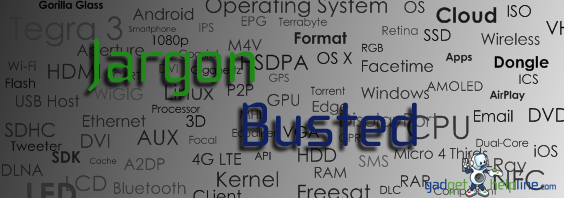It’s been around for a while in various corners of the world, but right now the term ‘4G LTE’ is fast becoming the latest buzzphrase in the UK.
Everything Everywhere has announced its plan to become a third network alongside Orange and T-Mobile, solely offering 4G LTE products and services in the UK. What’s more, you could be using this new technology before the end of the year. So what does it all mean? We’re going to try to answer all of your questions on the new technology and its ins and outs.
What does ‘4G LTE’ stand for?
The 4G part means that this is the fourth generation of the mobile phone communications standard. Before 4G we had 3G, and before that 2G – both of which will still be used when 4G is around, they just provide slower web browsing speeds and poorer quality audio on calls.
The LTE part stands for ‘Long Term Evolution’. There are two types of 4G; WiMaX and LTE, and LTE is the one coming to the UK. 4G LTE is an evolution of 3G and it’ll be the standard for a long time from now, hence ‘Long Term’ Evolution.
What is 4G LTE and why is it better than 3G?
4G LTE brings many advantages over the current 3G standard – first and foremost it offers much faster mobile internet speeds for smartphones, tablets and laptops. Whereas 3G has theoretical top download speeds of around 21Mbps, 4G LTE is capable of up to 100Mbps, with a top upload speed of 50Mbps. It’s billed as 5 times faster than 3G, although customers on the Verizon 4G network in the US tend to get around 15Mbps with a top speed of 25Mbps. Still, that’s a good deal faster than some people’s home broadband, even in this day and age.
You won’t be limited to 4G signal either – 2G and 3G can still be used for calls and data; it’s just that 4G is the top dog. These superfast data speeds mean you’ll be able to download a big app in seconds, and stream TV from places like BBC iPlayer without having to wait for it to buffer.
4G LTE doesn’t just benefit the web surfers and app downloaders. It’s also going to mean even better audio quality on regular voice calls, as well as flawless video calling for Skype lovers.
How does it work?
4G LTE uses a similar technology to the likes of Wi-Fi, ADSL and DVB-T, the latter of which is used for your Freeview box or TV. A technology called Orthogonal Frequency Division Multiplexing (or OFDM) minimises interference and any loss of speed, and allows more information – such as a larger video file or big app – to be put into the same size piece of bandwidth as you would use with 3G. Put simply, more data can be sent to and from your device and it can be sent much quicker, which means fast downloads and fast web browsing.
When can I get 4G?
Everything Everywhere today announced plans to bring 4G LTE to 16 major UK cities before the end of the year. Ofcom has laid down the law already, telling our mobile networks that if they want to offer 4G, they have to have it reaching 98% of the population and 95% of the country by the end of 2017.
If, like us, you love to be an early adopter of the latest tech, then Everything Everywhere (or EE) will be the only place to get a 4G gadget in the UK this year. Everything Everywhere, or EE, were given the go ahead by Ofcom to start broadcasting using existing 3G frequencies, before other networks.
Will my network offer 4G?
4G signal can be broadcast using the same frequencies as 3G is currently using, but the 800MHz and 2.6GHz that true 4G LTE requires will need to be auctioned off to see which UK networks want to use it, and how much of it they want to use. Ofcom will be starting the 4G auction early next year, where other networks such as Three, O2, Vodafone, Orange and T-Mobile will be able to bid for a slice of the action.
If your network chooses to buy up some rights, we’re expecting them to start broadcasting as soon as possible, so hopefully other networks will be competing with EE by halfway through the year. Three has already purchased some of the current 1800MHz bandwidth that can be used to broadcast 4G, so we’re expecting them to join the race second.
Will my phone or tablet receive 4G?
Unfortunately not, unless it’s specifically labelled a ‘4G’ or ‘LTE’ device. At the moment devices sold in the UK are 3G, save for the iPad 3 which claims to be 4G – unfortunately that won’t work with 4G when it does come to the UK, because it uses 700 and 2100MHz frequencies which aren’t broadcast here.
A whole host of new gadgets will be launched to use the 4G signal, and EE has kicked things off with seven. Five are smartphones – ones you’ve already seen like the Samsung Galaxy SIII, albeit with 4G LTE capabilities – and the other two consist of a mobile broadband dongle and a mobile broadband router (Mi-Fi).
Any questions?
So that’s 4G LTE, to start with. Of course, as with any technology it can become much more complex, but this is just to get you started. If you have any other questions about how 4G works, what it is, or the types of gadget that can use it, why not add your question to a comment and send it to us. We’ll do our very best to answer you.
Let us know your thoughts on our comments below or via our @Gadget_Helpline Twitter page or Official Facebook group.

